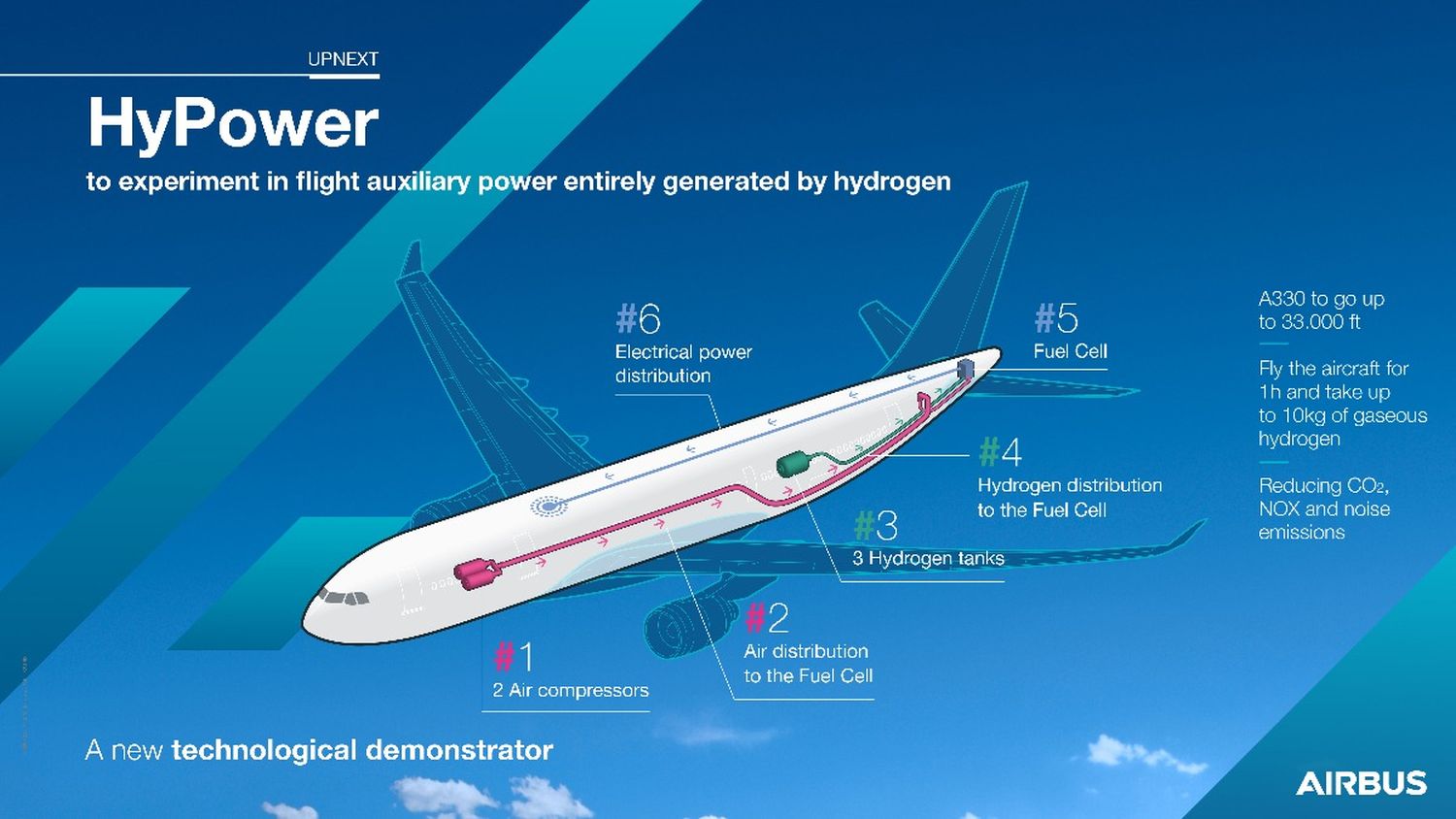Airbus highlighted its progress in testing hydrogen fuel cell propulsion alternatives, one of the most viable near-term technologies for reducing the industry’s greenhouse gas emissions, and announced that it will test a new fully hydrogen-powered auxiliary power unit (APU) on a modified A330.
UpNext, a division of the company dedicated to studying new technologies and their possible integration into the manufacturer’s products, will lead the project. It will be part of the ZEROe programme, which aims to advance the introduction of more sustainable alternatives. The demonstrator will be run from Airbus’ facilities in Spain.
See also: Paris Air Show: New Californian airline orders 250 hybrid-electric engines from ZeroAvia
HyPower, the hydrogen-powered APU to be tested by Airbus
First, the European manufacturer will test a system for providing auxiliary power generated entirely by hydrogen, as opposed to traditional auxiliary power units, which are powered by conventional fuel.
To this end, Airbus will study an innovative power generation architecture and launch a new demonstration programme. The first flight tests of the system, known as HyPower, are planned for the end of 2025. Main objective will be to analyse the power balance between the engines and the auxiliary power unit. The system will also have a ground test bed.
The company stressed that the system will enable a reduction in carbon dioxide and nitrogen oxide emissions compared to APUs currently in service. It will also enable a reduction in associated noise.
«These tests will mark a new step in our decarbonisation journey and ZEROe programme through an ambitious flight demonstration that will take to the air by end 2025», said Michael Augello, CEO of Airbus UpNext. «We want to demonstrate the operability and integration of the system, including refuelling the aircraft with hydrogen», he explained.
During the tests, the Airbus A330 will climb to cruising altitudes and fly for one hour with ten kilograms of gaseous hydrogen on board.
See also: Airbus will test its hydrogen roadmap in New Zealand


Comentarios
Para comentar, debés estar registrado
Por favor, iniciá sesión